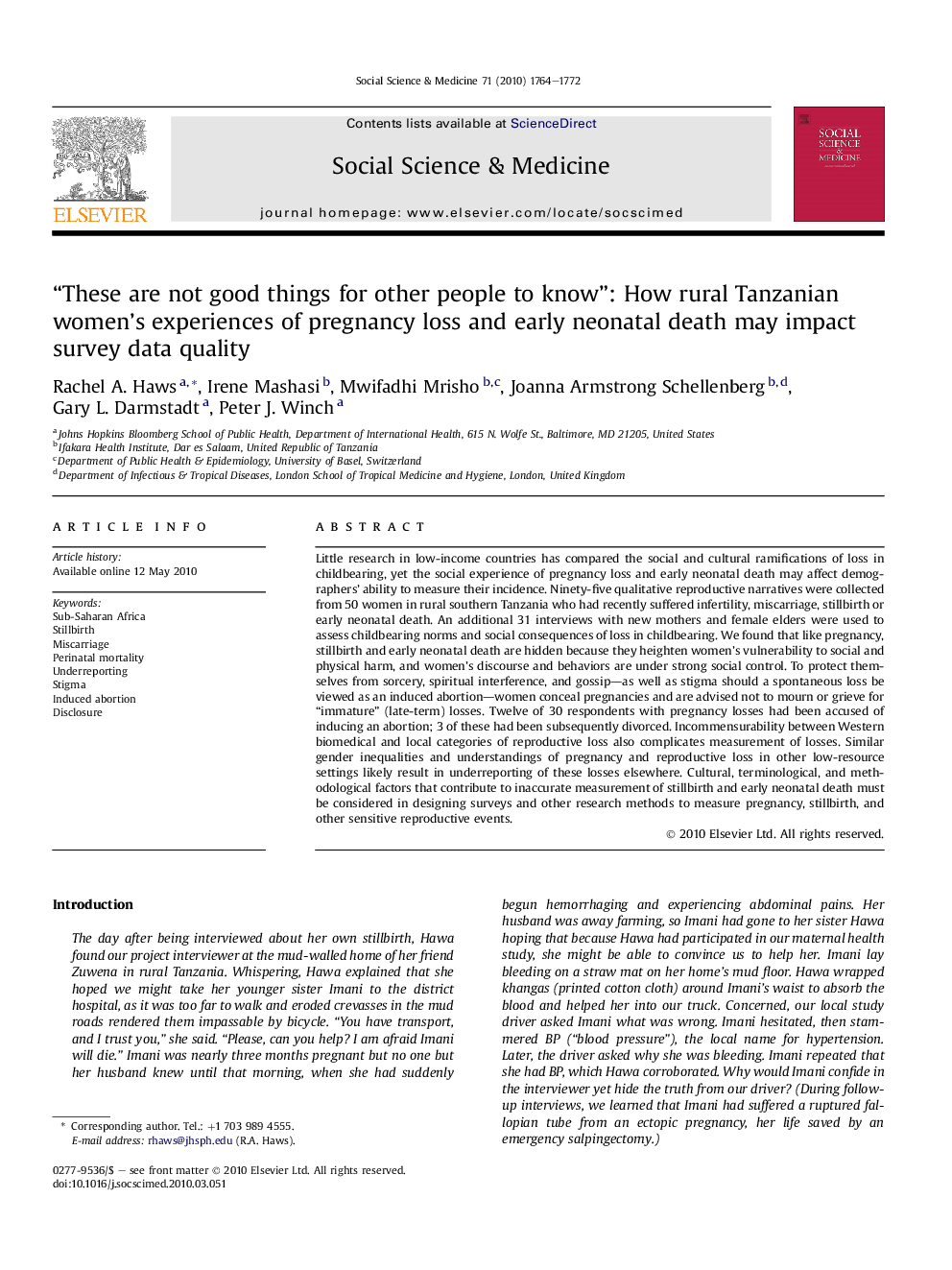| Article ID | Journal | Published Year | Pages | File Type |
|---|---|---|---|---|
| 10471806 | Social Science & Medicine | 2010 | 9 Pages |
Abstract
Little research in low-income countries has compared the social and cultural ramifications of loss in childbearing, yet the social experience of pregnancy loss and early neonatal death may affect demographers' ability to measure their incidence. Ninety-five qualitative reproductive narratives were collected from 50 women in rural southern Tanzania who had recently suffered infertility, miscarriage, stillbirth or early neonatal death. An additional 31 interviews with new mothers and female elders were used to assess childbearing norms and social consequences of loss in childbearing. We found that like pregnancy, stillbirth and early neonatal death are hidden because they heighten women's vulnerability to social and physical harm, and women's discourse and behaviors are under strong social control. To protect themselves from sorcery, spiritual interference, and gossip-as well as stigma should a spontaneous loss be viewed as an induced abortion-women conceal pregnancies and are advised not to mourn or grieve for “immature” (late-term) losses. Twelve of 30 respondents with pregnancy losses had been accused of inducing an abortion; 3 of these had been subsequently divorced. Incommensurability between Western biomedical and local categories of reproductive loss also complicates measurement of losses. Similar gender inequalities and understandings of pregnancy and reproductive loss in other low-resource settings likely result in underreporting of these losses elsewhere. Cultural, terminological, and methodological factors that contribute to inaccurate measurement of stillbirth and early neonatal death must be considered in designing surveys and other research methods to measure pregnancy, stillbirth, and other sensitive reproductive events.
Keywords
Related Topics
Health Sciences
Medicine and Dentistry
Public Health and Health Policy
Authors
Rachel A. Haws, Irene Mashasi, Mwifadhi Mrisho, Joanna Armstrong Schellenberg, Gary L. Darmstadt, Peter J. Winch,
